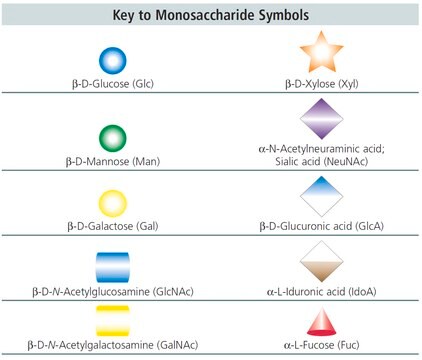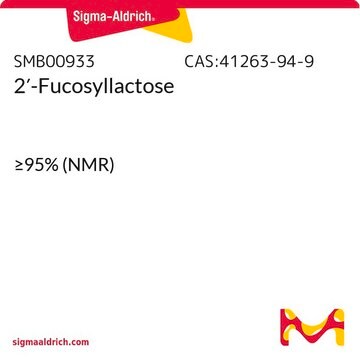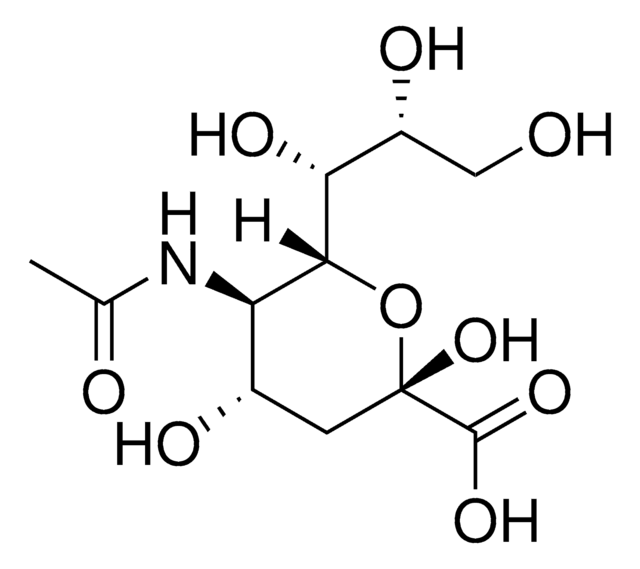A8556
6′-Sialyllactose sodium salt
from bovine milk or colostrum, ≥97% (HPLC)
Synonym(s):
α-NeuNAc-(2→6)-β-D-Gal-(1→4)-D-Glc, 6′-N-Acetylneuraminyl-lactose sodium salt, 6′-SL
About This Item
Recommended Products
biological source
bovine milk or colostrum
Assay
≥97% (HPLC)
form
powder
impurities
≤1% free N-Acetyl Neuraminic Acid
≤11% water (Karl Fischer)
color
white to off-white
solubility
water: 20 mg/mL, clear, colorless
cation traces
Na: 2.6-4.5% (anhydrous)
storage temp.
−20°C
SMILES string
[Na+].[H][C@]1(O[C@](C[C@H](O)[C@H]1NC(C)=O)(OC[C@H]2OC(O)[C@H](O)[C@@H](O)[C@@H]2O[C@@H]3O[C@H](CO)[C@H](O)[C@H](O)[C@H]3O)C([O-])=O)[C@H](O)[C@H](O)CO
Looking for similar products? Visit Product Comparison Guide
Application
Other Notes
Storage Class Code
11 - Combustible Solids
WGK
WGK 3
Flash Point(F)
Not applicable
Flash Point(C)
Not applicable
Personal Protective Equipment
Certificates of Analysis (COA)
Search for Certificates of Analysis (COA) by entering the products Lot/Batch Number. Lot and Batch Numbers can be found on a product’s label following the words ‘Lot’ or ‘Batch’.
Already Own This Product?
Find documentation for the products that you have recently purchased in the Document Library.
Articles
O-Linked glycoproteins are usually large proteins with a molecular mass of >200 kDa. Glycosylation generally occurs in high-density clusters and may represent as much as 50-80% of the overall mass.
Our team of scientists has experience in all areas of research including Life Science, Material Science, Chemical Synthesis, Chromatography, Analytical and many others.
Contact Technical Service







